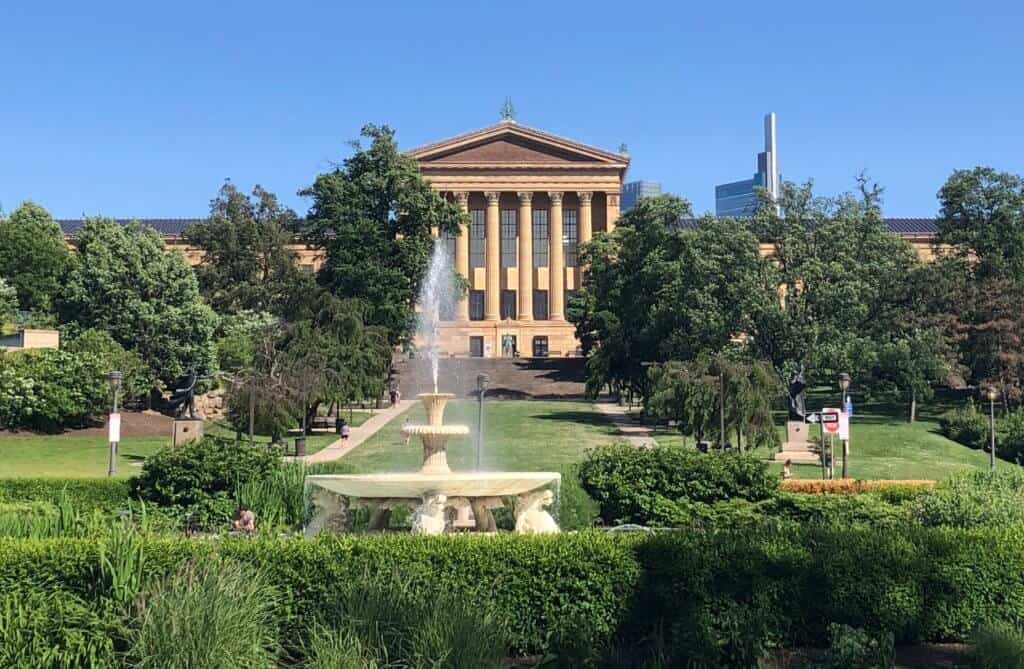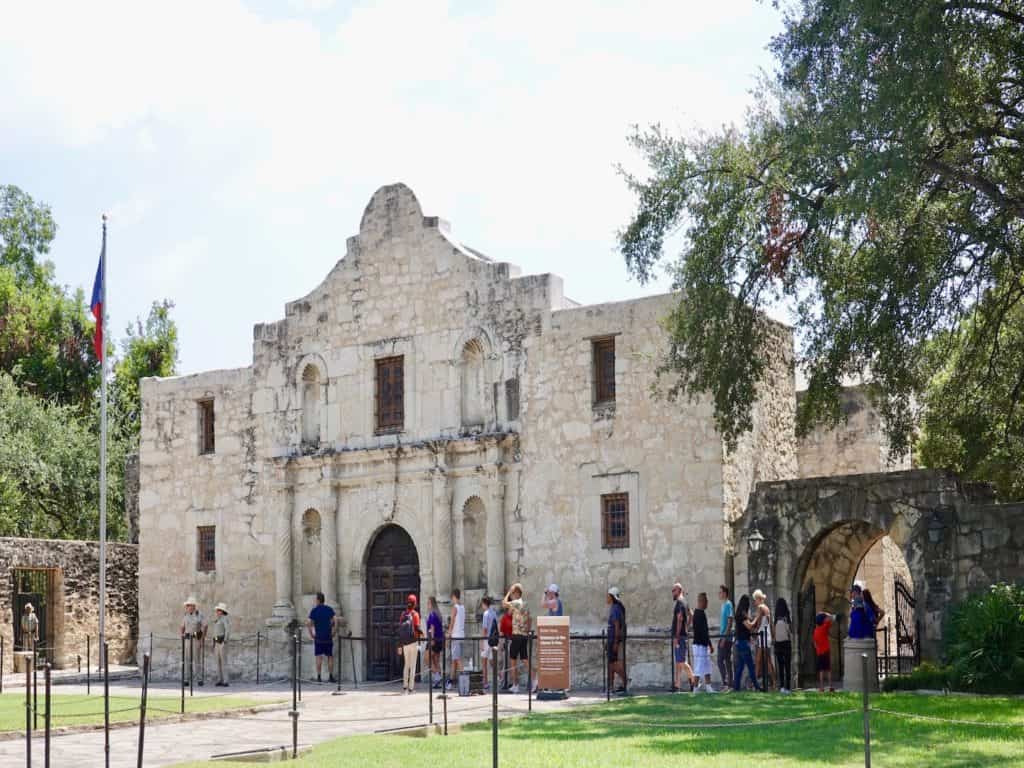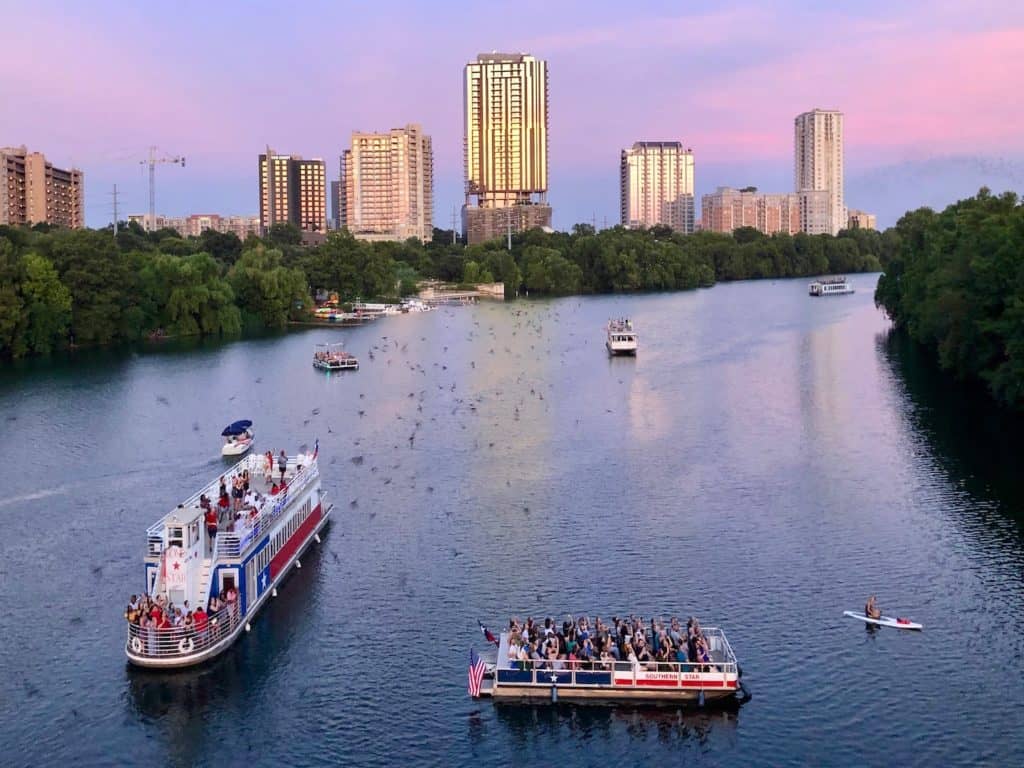Want a completely different experience while at the shore? Consider leaving the hustle and bustle of the beach-going crowd for a while and visiting a treat for nature lovers. Tucked away off the main drag of Delaware you’ll find the calm and abundant natural beauty of a wildlife refuge. One of these places is Bombay Hook National Wildlife Refuge. Its key draw is migrating birds in the spring and fall, but there’s plenty of wildlife year-round. Located in Smyrna, Delaware, it’s not far from Dover.
If you are planning a trip to one of the great beaches in Delaware, check out this Delaware Beach Guide. If you’re looking for something else to do in Dover, visit the Air Mobility Command Museum, just south of Dover Air Force Base off Route 1.
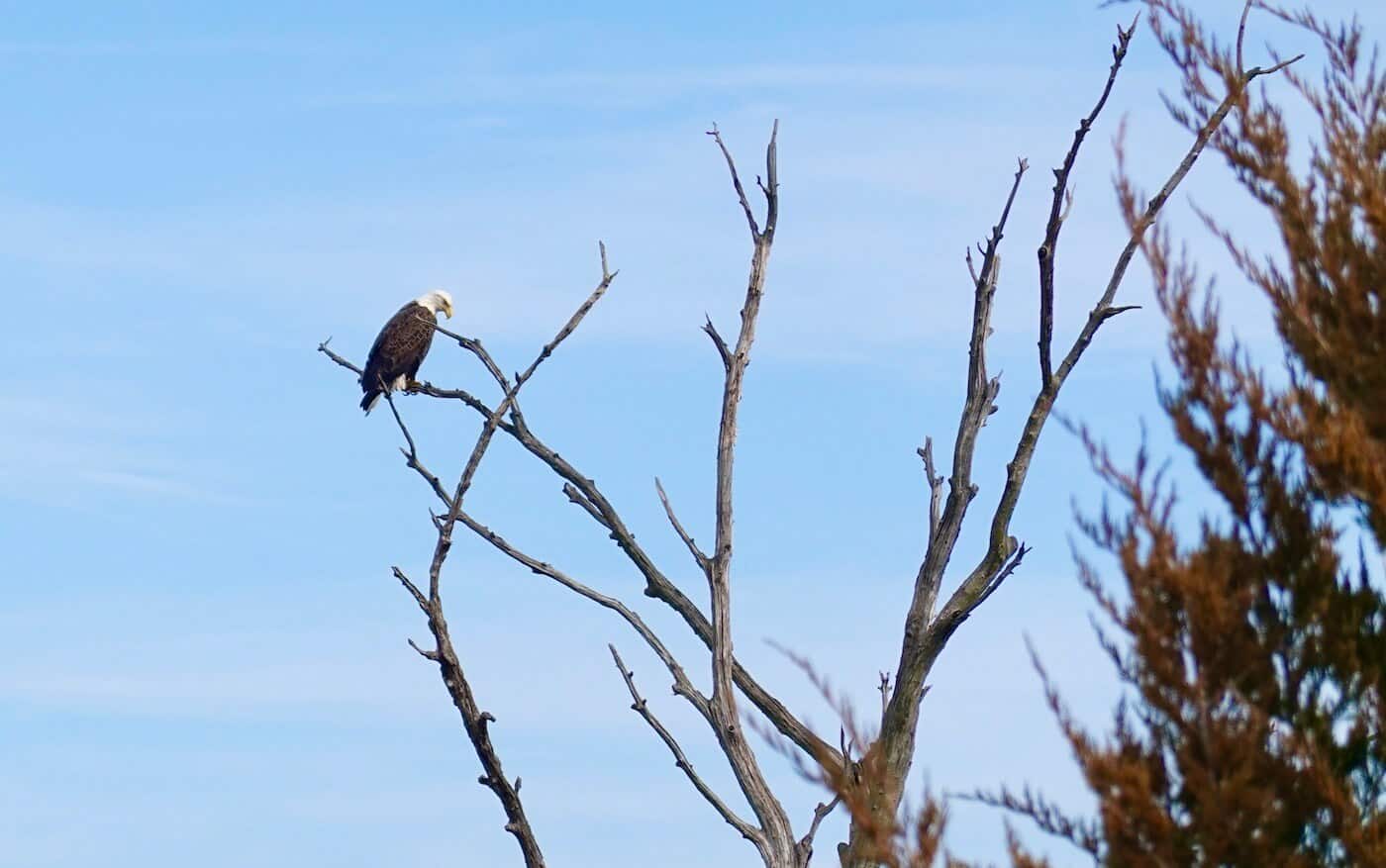
An Overview of Bombay Hook
Bombay Hook Wildlife Refuge has over 16,000 acres along the Atlantic flyway — the pathway of birds migrating between the Gulf of Mexico and Canada. This is a place where wildlife can rest, feed, and breed — in peace. Peak times for migratory birds are spring and fall.
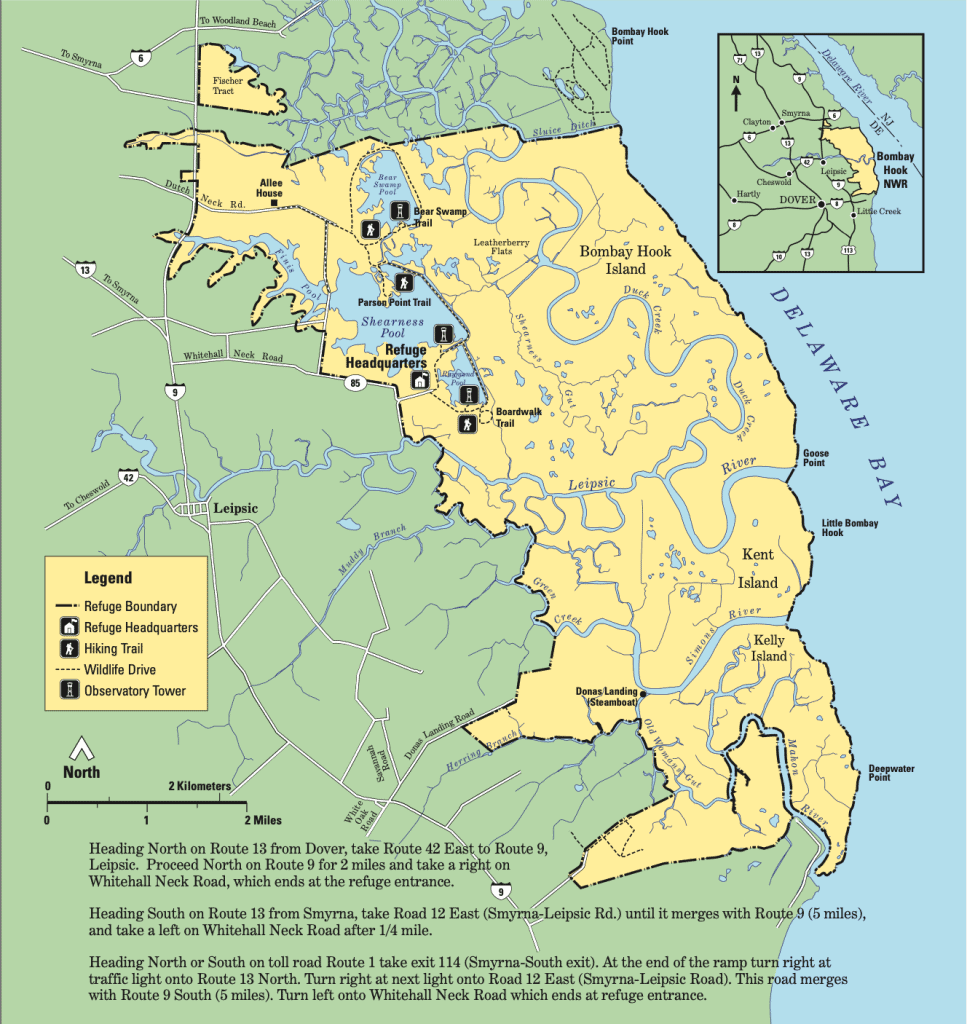
You’ll find a variety of habitats and wildlife here (more on that below). Within a mile or so, you’ll go from farmland to wooded wetlands to tidal wetlands to the bay itself. Each is a distinct micro-ecosystem. It’s the perfect place to spend some time appreciating the beauty and splendor of these creatures — from songbirds and shorebirds to birds of prey. Of course, there are other more permanent residents — like deer and foxes — here as well as vegetation that changes with the seasons.
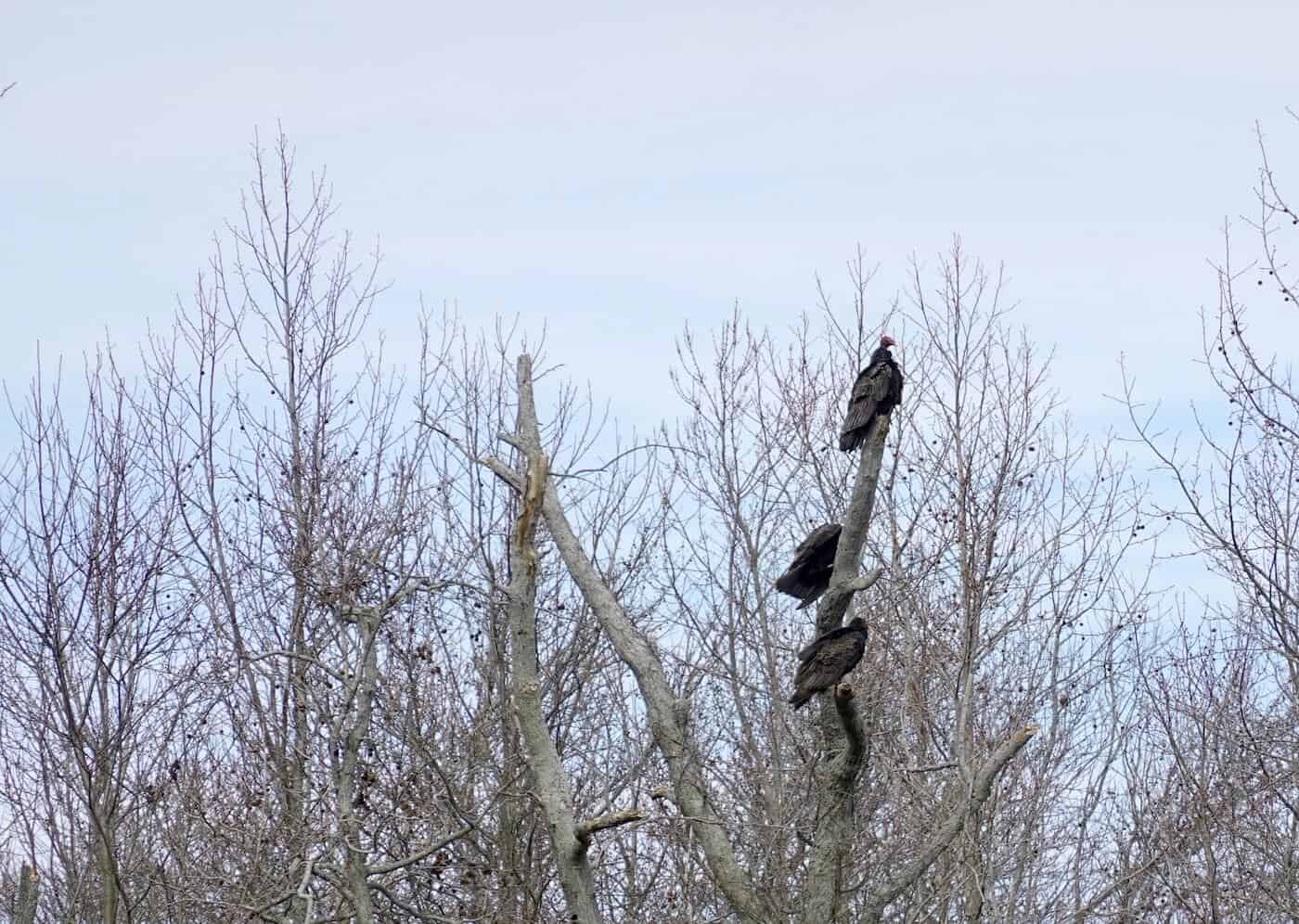
Because of the cycle of the seasons, no two visits to Bombay Hook will likely be the same. You’ll see different species and different cycles of life. For example, in springtime, bald eagles are nesting and babies are hatching. Summertime brings lots of wading birds like egrets and herons. As tree leaves begin to turn in the fall, Canada geese stop by on their way south. Check out this Seasons of Wildlife guide with details on what you’re likely to find whenever you happen to visit Bombay Hook.
The refuge opens 30 minutes prior to sunrise and closes 30 minutes after sunset. The visitor’s center is open from 8:00 am to 4:00 pm during the summer; spring and fall hours vary. Check the park’s website for more information and a calendar of events for your visit.
What You’ll Find at Bombay Hook
- Wide variety of wildlife depending on the season:
- In spring, wildlife includes shorebirds, migrating waterfowl, and songbirds.
- In summer, wildlife includes herons, egrets, bald eagles, wood ducks, and mallards.
- In fall, wildlife includes snow and Canada geese, swans, shovelers, ruddy ducks, mallards, and more.
- In all seasons, there are amphibians, reptiles, mammals, and fish. Year-round residents include deer, otters, foxes, muskrats, and woodchucks.
- Diverse habitats:
- salt marshes,
- freshwater man-made pools,
- woodlands, and
- open fields.
- 12-mile trail to walk, bike, or drive over flat terrain.
- 5 shorter trails to walk (no bikes allowed). These range from .25 to 1 mile trails over flat terrain. Two of these are handicapped-accessible.
- 3 observation towers to climb to gain a better view of birds and other wildlife.
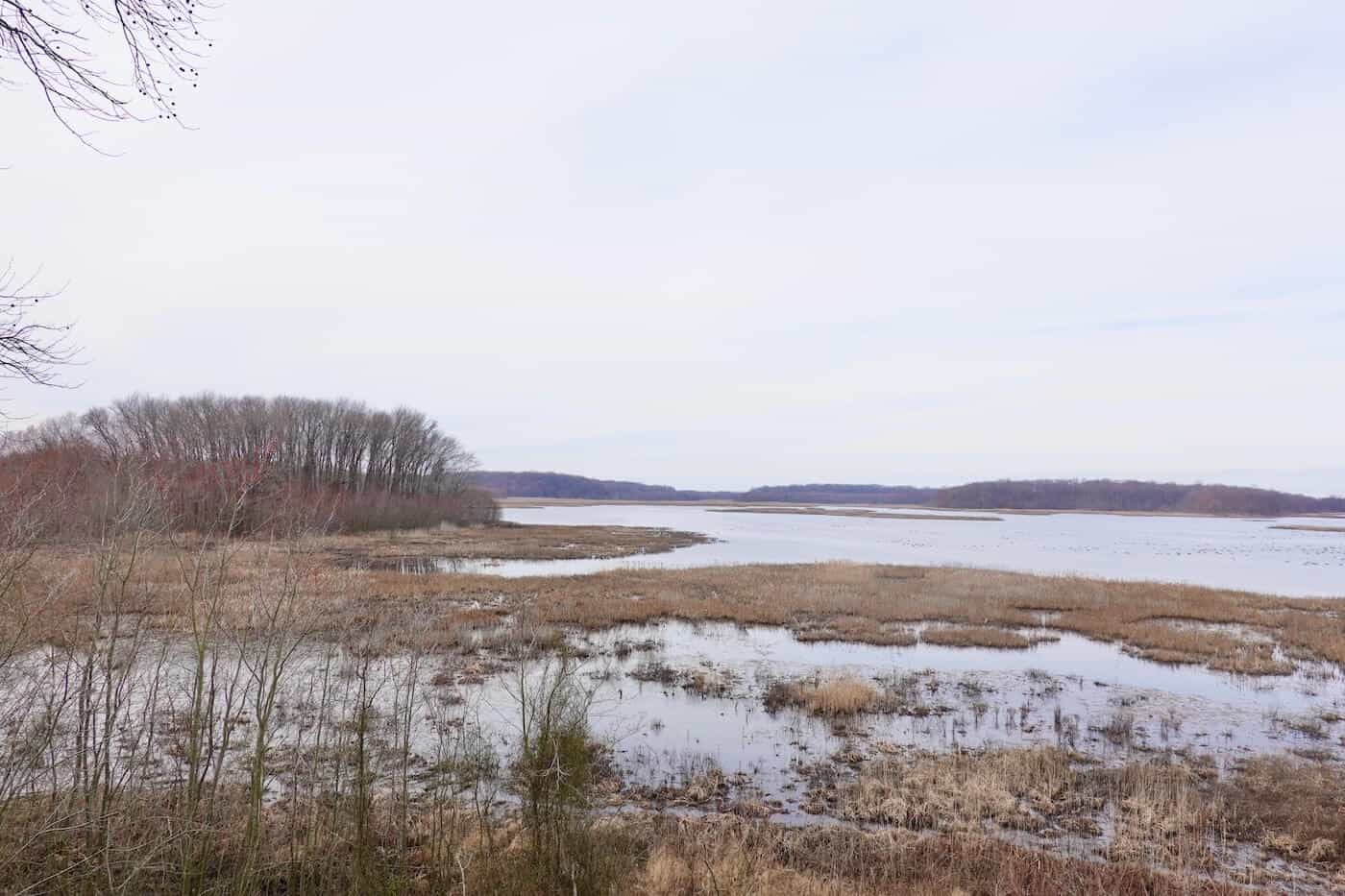
Tips for Your Visit
These tips should help make your visit to Bombay Hook pleasant.
- Bring exact cash. When we visited, the entrance fee was $4 that we had to place in an envelope that was provided in a small stand outside the visitor’s center. Having a pen or pencil would be handy, too, to write the required information on the envelope. You leave this in a box before proceeding through the refuge.
- Bring sunscreen and bug spray. Having both handy will be helpful. It can get quite buggy at times. And remember that ticks may be present, as well. Bombay Hook actually suggests long-sleeve shirts and long pants in the summer.
- Bring binoculars. Many birds rest in tall trees. For the best observation, bring binoculars!
- Bring your good camera to capture scenes of beautiful wildlife. If you have a telephoto lens, it’ll be worth lugging it along as you hike the trails or stop along one of the pools.
- Bring your own food and drink. Don’t forget to bring water! There is no snack bar or concession stand. There are picnic tables and trash bins at several places along the road that meanders through Bombay Hook.
- Stop in the visitor’s center. There are displays with lots of information to view along with brochures to take with you. There were even coloring pages for the younger set. A small gift shop (more like a closet) was packed with interesting things for adults and kids.
- If needing a restroom, go to the visitor center. This restroom is open whenever the park is open. There’s also a porta-potty at Bear Swamp Trail.
- Do NOT try to feed or otherwise disturb the wildlife. Remember that this is their refuge.
- Do NOT bring or use drones. Their use is prohibited.
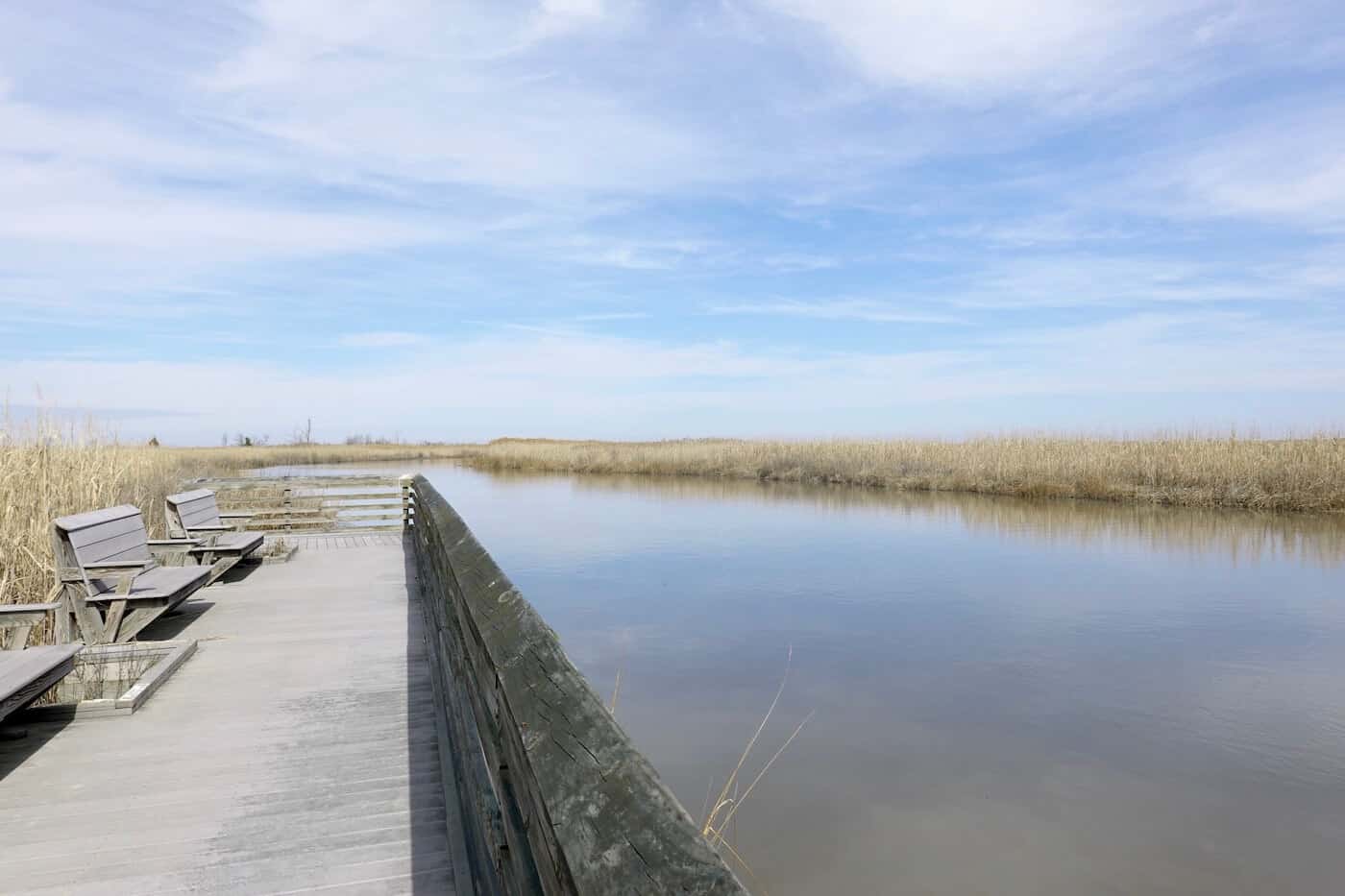
A Visit in the Fall
When we visited in the fall, it was quiet. There were other visitors, but everyone was quietly walking or driving. We drove along the 12-mile road and stopped at several spots to take the shorter walks along the trails and, in some cases, a boardwalk through the woods and marshes. All the trails were along flat terrain, so they were easy walks.
Don’t forget to look up! While walking near the woods, we watched a bald eagle circle above us. A little while later, we saw several turkey vultures resting high atop some trees. Observation towers in certain spots were worth the climb as a higher vantage point enabled us to view abundant wildlife in the area. Since it was low tide at the time, we saw plenty of ducks and birds resting and feeding. Views from the towers can reach from the bay over the tidal marsh and into the wooded wetlands — and almost span the breadth of the park.
Brief History of Bombay Hook
Dutch settlers once lived here, and the name of the refuge is actually derived from the Dutch name for it: “Bompies Hoeck” meaning “little-tree point.” Bombay Hook National Wildlife Refuge was created in 1937 as a stop in the chain of refuges along the Atlantic coast. Some of the funds to build and support the refuge came from the sale of Duck Stamps by the U.S. federal government; if interested in learning more, check out this website.
Between 1938 and 1942, the Civilian Conservation Corps (CCC) — a voluntary public works program — began to shape the refuge into what it has become. Their work included clearing brush, building roads, creating pools, planting thousands of trees, and building an observation tower. The U.S. military used part of the refuge for training when World War II loomed.
Bombay Hook is one of more than 550 refuges in the United States administered by the U.S. Fish and Wildlife Service. All of these sites are devoted to the protection of important wildlife species.
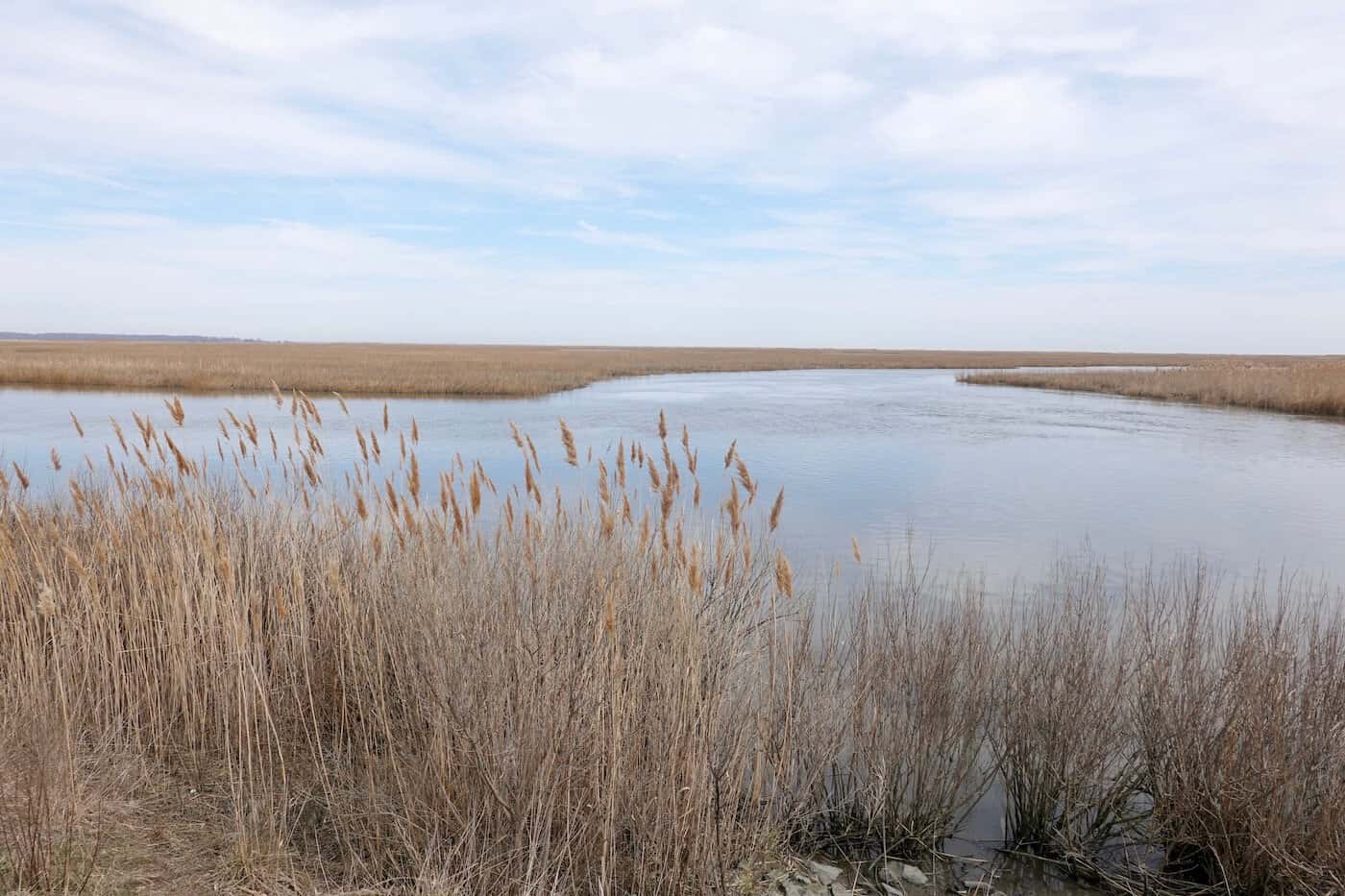
Nearby Attractions & Map
There’s plenty of fun to be had along the Delaware shore. Here are a few other ideas for you:
- Air Mobility Command Museum, Dover (off Rte. 1)
- Cape Henlopen State Park, Lewes
- Delaware Beach Guide
- Fresh Pond Trail, Bethany Beach
- Holts Landing State Park, near Bethany Beach in Dagsboro
- Indian River Life-Saving Station, near Rehoboth Beach
- James Farm Ecological Preserve, near Bethany Beach
- Prime Hook National Wildlife Refuge, Milton (off Rte. 1)
- Trap Pond State Park, Laurel
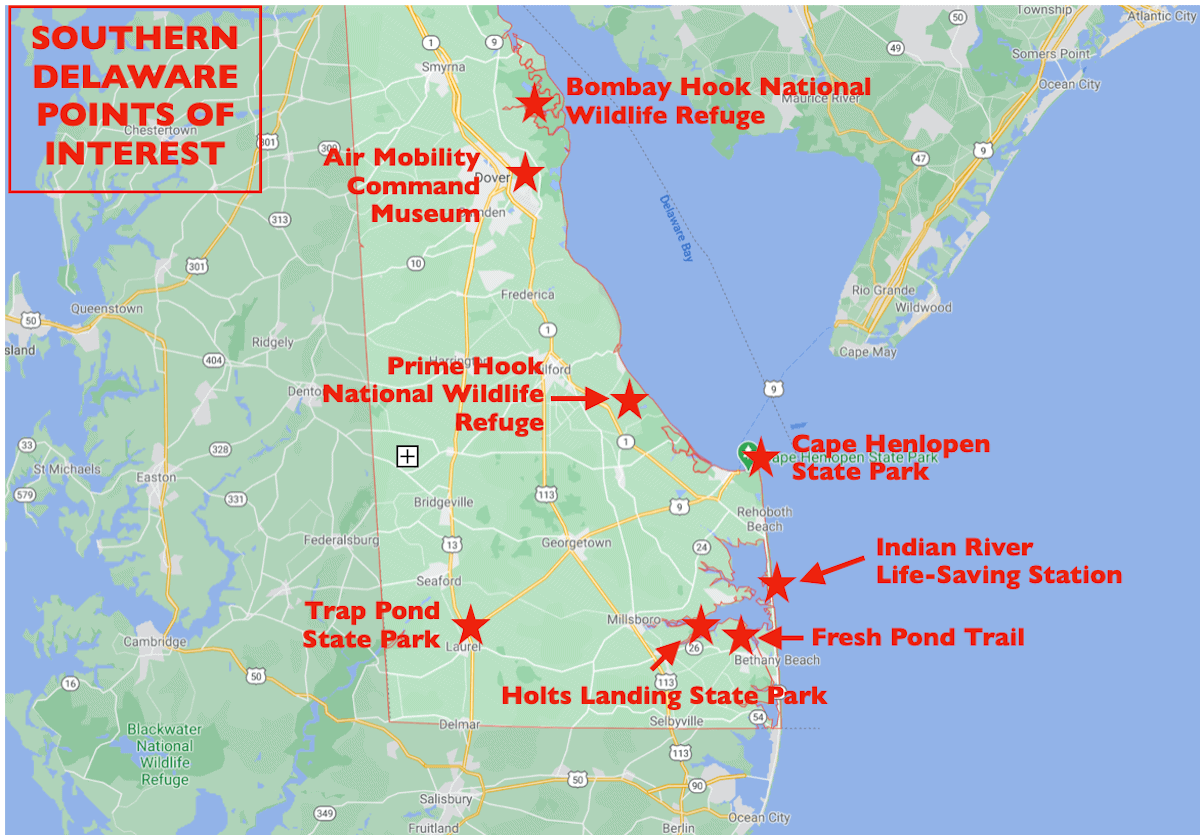
Final Thoughts
Bombay Hook Wildlife Refuge was along the way as we were traveling on Route 1 in Delaware. It’s about 15 miles, or 25-30 minutes, along two-lane roads from Dover Air Force Base — a landmark familiar to many. We spent a few hours here, but we easily could have stayed longer had we not had to get back on the road. Some folks, like serious birders, will plan this to be the final destination of a weekend trip. They come with serious camera gear and a lot of patience — waiting to capture the perfect scene. We are more casual nature lovers, but this place welcomes us all.
Remember that there’s plenty to do in the area. As mentioned in the previous section, Prime Hook National Wildlife Refuge — another relaxing and refreshing spot — is just off Route 1 between Dover and Rehoboth Beach. If nature is your thing, you’ll want to visit Prime Hook!
Comments?
Please share your experiences and suggestions for other places to visit in the general area. Your ideas could be helpful to other travelers. Thanks! 🙂

